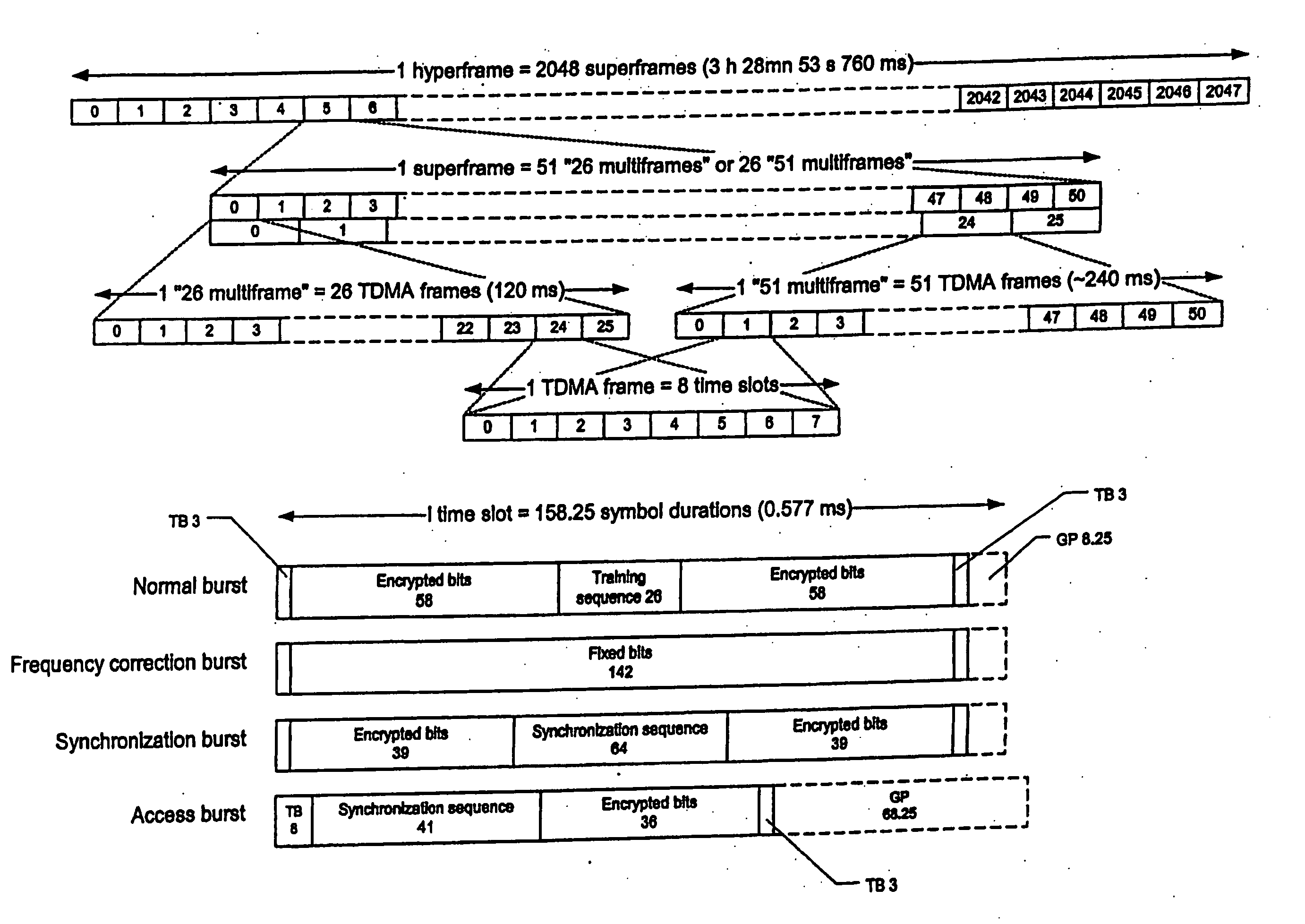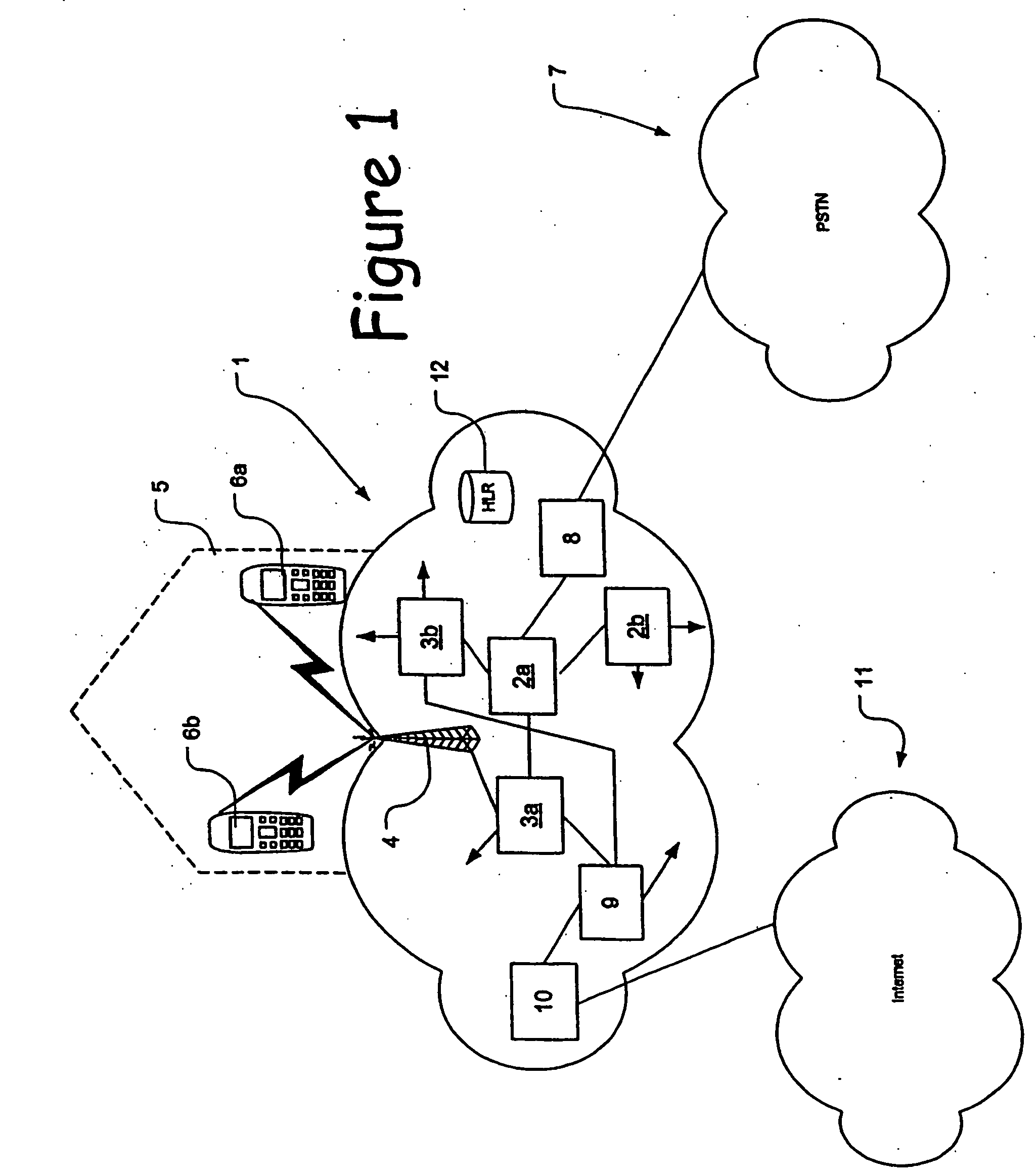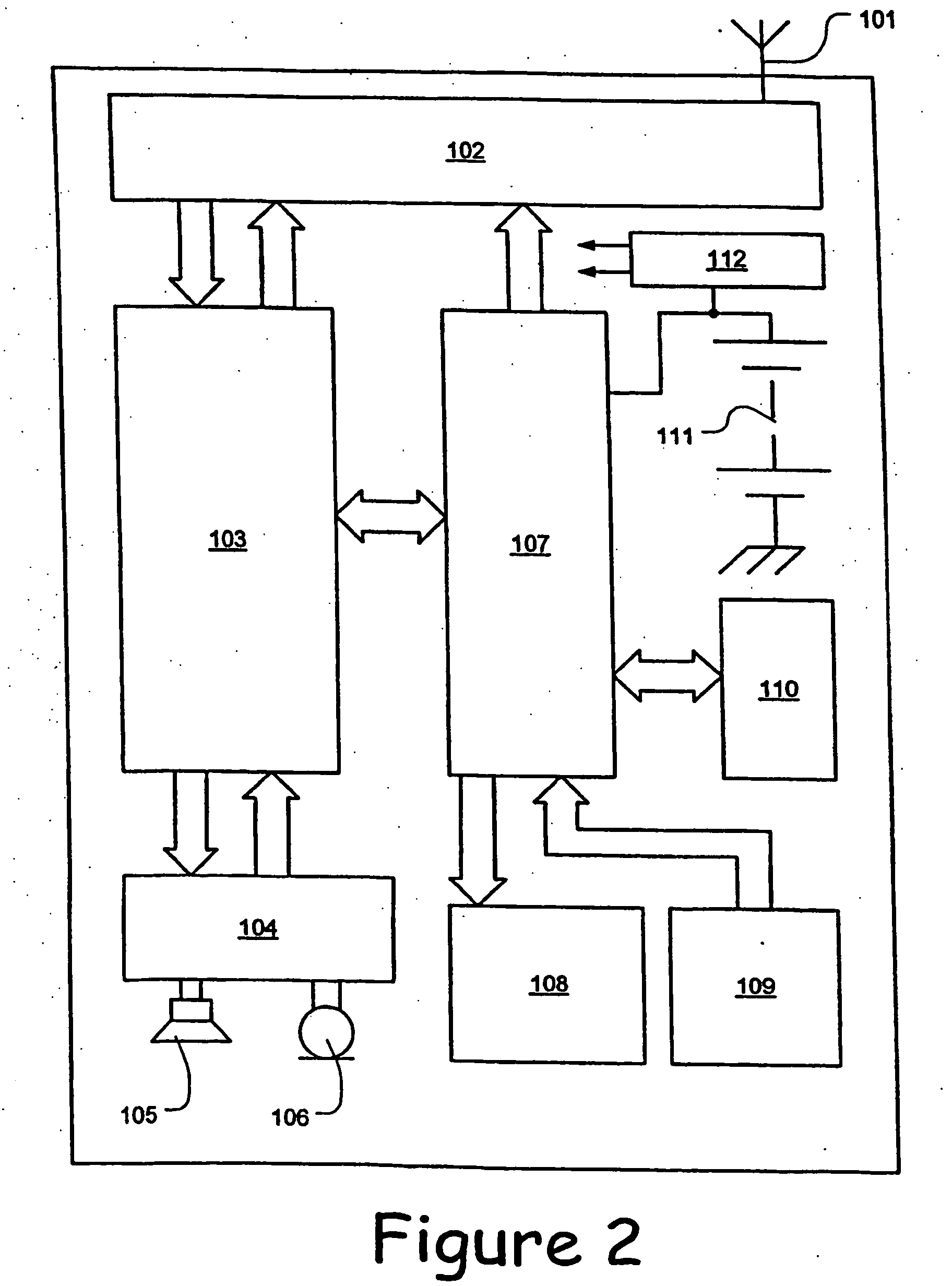Output power control in multislot uplinks
- Summary
- Abstract
- Description
- Claims
- Application Information
AI Technical Summary
Benefits of technology
Problems solved by technology
Method used
Image
Examples
first embodiment
[0059] In a first embodiment, the mobile station immediately changes its output power according to threshold slot usage / power combinations.
[0060] Referring to FIG. 8, when the demand for slots changes, the controller 107 of a mobile station 6a, 6b determines whether the current instantaneous power amplifier output power level exceeds a first threshold set for the number of slots to be used after change (step s1). The first threshold is the instantaneous output power level that gives an acceptable average output power level. If the first threshold is exceeded, the controller 107 determines the power reduction required and compares this with a second threshold set at the power level, demanded of the mobile station 6a, 6b by the serving base station controller 3a, 3b, less an “allowable reduction” margin, for example 3 dB. If this reduced power level falls below the second threshold, the controller 107 notifies the application that the service requiring the extra slots cannot be provid...
second embodiment
[0062] In a second embodiment, the mobile station changes its output power according to the temperature of its rf power amplifier, which is sensed by monitoring a convenient DC voltage in the amplifier or a temperature sensor (not shown) provided for the purpose. In this case the peak output power is kept on all slots at the level requested by the BSS until the temperature exceeds a threshold level, after which the output power will be reduced within specified limits.
[0063] Referring to FIG. 9, the controller 107 regularly compares the temperature of the mobile station's if power amplifier with a first threshold, corresponding to a maximum allowable operating temperature (step s101). If the first threshold is exceeded, the controller 107, the power is reduced (step s102). The process is left after step s102.
[0064] If the first threshold is not exceeded (step s101), the temperature is compared with a second lower threshold (s103). The second lower threshold is used to introduce some...
third embodiment
[0065] In a third embodiment, relatively high average power levels are allowed. However, such high power levels are adjusted down after a delay to avoid overheating while allowing short period of high bandwidth use.
[0066] Referring to FIG. 10, when the demand for slots changes, the controller 107 of the mobile station 6a, 6b determines whether the current instantaneous power amplifier output power level exceeds a first threshold (step s201). The first threshold is the instantaneous output power level that gives an acceptable average output power level. If the first threshold is exceeded, the controller 107 determines whether a cooling flag is set (step s202) and, if not, sets a timer (step s203), unless the timer is already running, increases the output power level (step 204) and exits the process. Otherwise the application is alerted that the service requiring the extra slots cannot be provided (step s205) and then the process is exited.
[0067] If the first threshold is not exceede...
PUM
 Login to View More
Login to View More Abstract
Description
Claims
Application Information
 Login to View More
Login to View More - R&D
- Intellectual Property
- Life Sciences
- Materials
- Tech Scout
- Unparalleled Data Quality
- Higher Quality Content
- 60% Fewer Hallucinations
Browse by: Latest US Patents, China's latest patents, Technical Efficacy Thesaurus, Application Domain, Technology Topic, Popular Technical Reports.
© 2025 PatSnap. All rights reserved.Legal|Privacy policy|Modern Slavery Act Transparency Statement|Sitemap|About US| Contact US: help@patsnap.com



